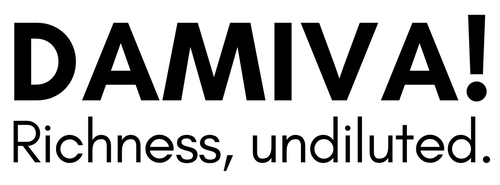Where Did This Belly Tire Come From?

Excess estrogen is changing your figure after age 40
I’m not bragging, okay maybe I am a bit, but I eat super healthy every day. Everything organic organic organic. And kale. I have 3 types of organic kale – black, red and green – sitting in my produce drawer all the time. Of course also antibiotic-free and free-range eggs and meats. I also avoid wheat and eat very little in the way of carbs.
My BMI is the same (22.5) and between the normal range of 18.5 to 24.9. I exercise weekly – 2 rounds of spin bike, 1 yoga class and free weights for my upper body. So what is happening to my middle? Yes, the answer is – hormones of course.
The extra inch around my waist that I never had when I was 36 or even 43, but now, at 46, feels like it’s here to stay. My body is preparing for menopause by building abdominal fat, which is a great repository for our female hormones, especially estrogen. So while the extra female hormones keep me happy, my jeans are squealing and the mommy jeans are calling to me.
I had an extra two inches of fat around my middle and changed my diet slightly to remove carbs and eat even more kale. I lost about an inch that way. But there are certain changes I will need to implement before I lose this last inch. They all relate to estrogen dominance.

The estrogen to progesterone imbalance is what causes estrogen dominance, i.e. an excess of estrogen in our bodies. As our ovaries start to shut down, our progesterone in the lining of the ovary (corpus luteum) starts to decline first before the estrogen does. This leads to estrogen dominance and symptoms such as hot flashes and breast tenderness. It also leads to the belly tire.
Many women including those of child-bearing age have an estrogen dominance problem. For example, for those women who exercise daily (not me!), it’s likely that progesterone is being used up, also leading to estrogen dominance. Other causes of estrogen dominance include environmental factors such as pesticides, plastics, industrial waste products, car exhaust, meat, soaps, furniture and carpet that produce “xenoestrogens” or “foreign estrogens.”
Another reason we tend to keep weight on our belly is due to high levels of the stress hormone, cortisol (this is me!). When we produce too much cortisol our body goes into accelerated fat storing mode. High cortisol levels make us hungry all the time as the body thinks it needs to survive so therefore more food is needed. More fat equals more estrogen and so the vicious cycle continues. I can’t do much about my high pressure, stressful position as CEO of Damiva but how I deal with the stress is important for my long-term health.
There are other factors too that contribute to the weight gain. As we go into menopause our metabolism slows down and we lose muscle due often to low testosterone. So we need to eat less food just to maintain our weight. Also, lack of sleep results in loss of growth hormone, which helps us lose weight and gain muscle. So sleep-deprived, menopausal women will have an even more difficult time losing weight.


There are a few changes that I will try to make to reduce my estrogen dominance, which I know I have due to breast tenderness that I now experience intermittently and which I only had experienced before with lactation.
#1. I will try to eat half my meals as vegan. A vegan diet eliminates any potential extra estrogens that are found in meat and dairy products and the fibrous vegetables also remove excess estrogen from the stomach.
#2. I will try some hormone balancing herbs, such as Vitex and Maca, two types of roots that are known to balance hormones and decrease estrogen dominance.
#3. I will look for new ways to decrease stress while maintaining productivity. This sounds like an impossible task but hey, we all need challenges.
#4. I have decided that I can’t eat less, due to my hectic schedule and need for energy throughout the day, but I have to try to continue to not eat more.
It’s also important for me to continue with my existing supplements (magnesium, zinc, vitamin E, vitamin B6), diet and exercise. It seems like a long task list and a huge effort. But every time I procrastinate, I think about my recent painful yoga class. My instructor is fantastic, a true yogi, although he denies the fact, saying that he is always going to be a student. He told us that if we didn’t have pain now, we would have more pain later. My joints say, “I hear you loud and clear.”
So, it’s important for me to do what I can about hormone balancing and losing belly tire fat as I age and progress into full-blown menopause. Peri-menopause is one of the most challenging physical times in my life. The only other time I equate it to is my postpartum period, which also corresponds with a large hormonal drop. Except when I was post-partum, I had darling little babies to look at to drive up my progesterone and oxytocin levels. Now that these babies are grown up, for inspiration, I play the Dirty Dancing song, “I’m having the time of my life,” pretty much every week. It reminds me that I am indeed flourishing and that I need to celebrate one of the best times of my life.
Youtube gif from Dirty Dancing I’m having the time of my life.
https://www.youtube.com/watch?v=WpmILPAcRQo
Scientific articles:
http://www.menopause.org/for-women/menopauseflashes/exercise-and-diet/are-you-officially-overweight-
http://www.obesitynetwork.ca/
http://www.hsph.harvard.edu/nutritionsource
http://journals.lww.com/menopausejournal/Abstract/2000/07020/A_Longitudinal_Study_of_Weight_and_the_Menopause.5.aspx
Video:
https://youtu.be/UB_D_XW4rsY


